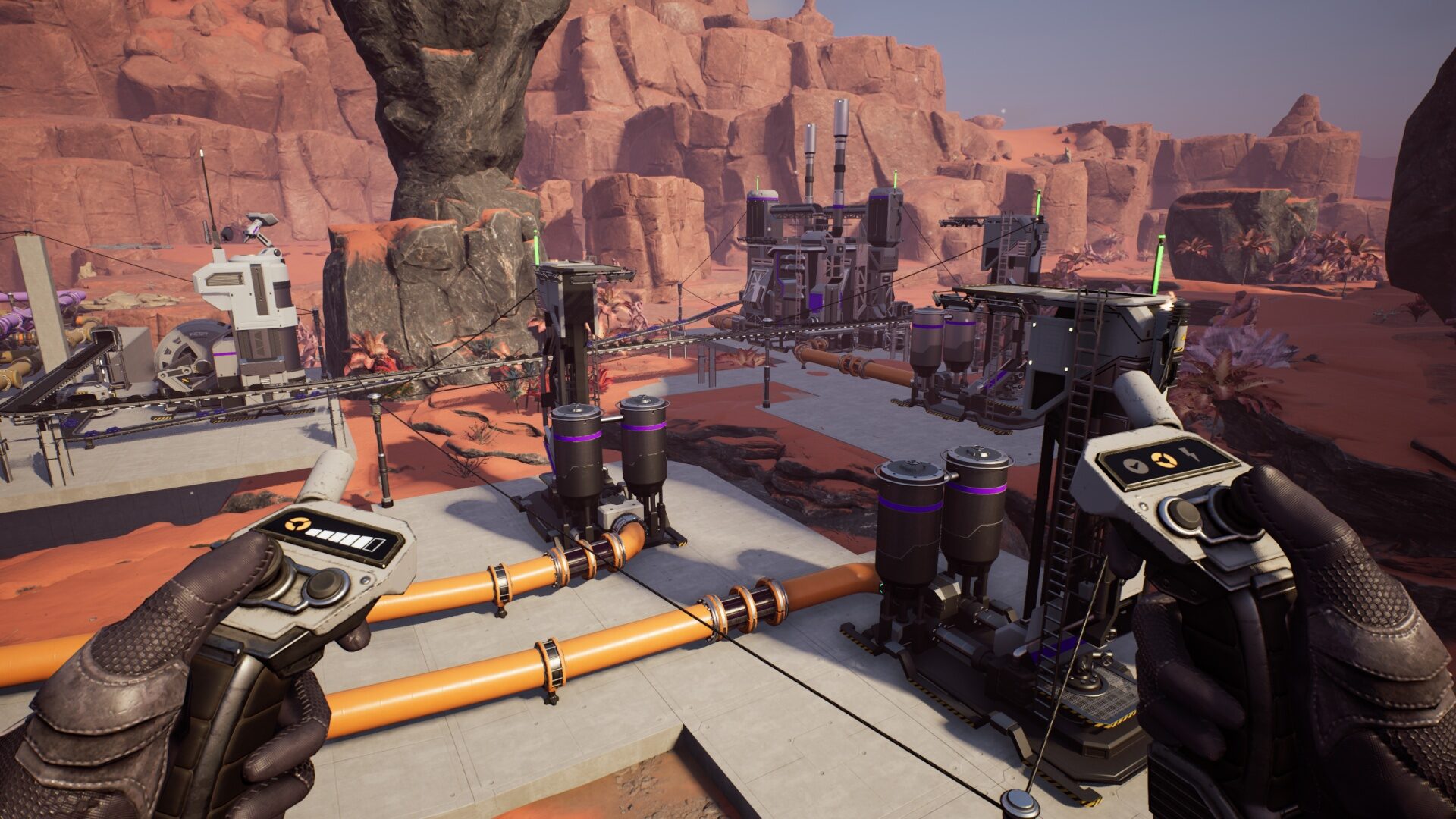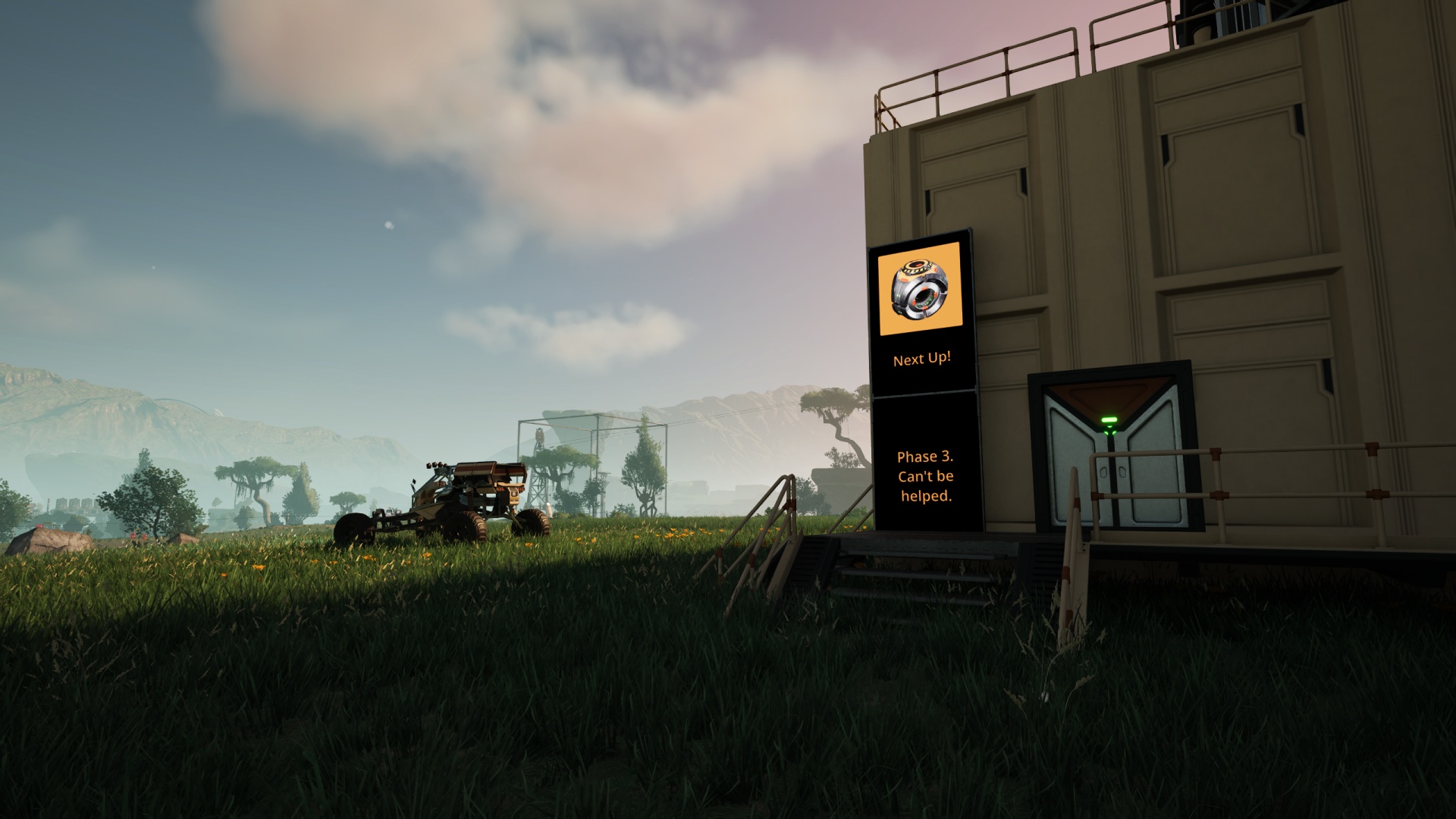I picked Satisfactory back up a couple of months ago in anticipation of the Update 6 patch landing on the Early Access branch. Instead of starting yet another new save, however, I decided to keep going on the save I started back before Update 4 landed. This neatly avoided having to climb the tech tree all over again, not to mention it takes advantage of the fact that I deliberately left the Spire Coast region alone the entire time so far. (The developers warned everyone that major map changes were coming to that area.)
Update 6 and its quality-of-life improvements arrived at the same time that I unlocked my very first ever “Turbofuel” recipe. I needed more electrical supply anyway (the lines on my power graphs criss-crossed a lot more than I was really comfortable with) so I decided to try out the more potent variety of fuel generation.

Here’s how that turned out.
Despite saving the region for after the promised map update, I ended up not using any of the new Spire Coast nodes anyway. (I’ve barely even set foot over there since the update dropped, and that was at night.) Instead I selected a cluster of normal and impure crude oil nodes in the Desert Canyons, mainly because there’s a (relatively) nearby source of sulfur which the fancy alternate Turbofuel recipe requires.

So… how many of what things making which materials do I need? As usual, any reasonably complex build project involves breaking out the spreadsheet.

The rundown looks a bit like this:
- Three Oil Extractors, one each on the two normal-quality Crude Oil nodes and the third on one of the impure nodes.
- One of the normal oil nodes’ output feeds a pair of Refineries set to making Fuel at 80 m³ (cubic meters) per minute. The waste product is sunk for tickets.
- The other normal oil node feeds four more Refineries set to making Heavy Oil Residue at a total of 160 m³/minute. The waste product is sunk.
- The impure oil node feeds a Refinery that makes Heavy Oil Residue, which is then fed to another Refinery to make Petroleum Coke at 120 units per minute. The waste product from the H.O.R. is sunk. (Yes, I’m sinking a lot of Polymer Resin in this project. I just don’t feel like shipping it somewhere else to turn into Plastic or Rubber. I can always add a drone port or something like that later without much fuss.)
- A Miner is placed on the (relatively) nearby Sulfur node. The resulting 120/minute of material is sent to the project site by monorail line.
- An Awesome Sink is placed to deal with solid waste products. (If I did this right, there shouldn’t be any excess liquid products.) (If.)
- The resulting Fuel, Heavy Oil Residue, Petroleum Coke, and Sulfur are fed into six Blenders making Turbofuel via the appropriate alternate recipe. One of the machines is underclocked to a target of 15 m³/minute (basically one-third of capacity), resulting in a total output from all machines of 240 m³/minute.
That seems like a lot of Turbofuel, doesn’t it? How many Fuel Generators will that power? Time for some more math, and what we get is… just shy of fifty four machines. The resulting power boost will be in the vicinity of 8000MW.
Not bad, eh? For context, my previous total power output from coal and oil plants elsewhere on the map added up to just north of 9000MW. Doubling my power capacity (more-or-less) from one project? Excellent!

Fuel Generators are quite large, and I needed to make a big, neatly aligned grid of the things. Well… kind of. I ended up with four rows of 13, then I stuck one generator at the end of each of the two pipeline segments feeding two each of the main facing rows of generators. The math just worked out that way. Since the math also decreed that I needed to underclock at least one generator, I set those two “extra” generators to ~58% capacity each. (This gets me as close to 240 m³/min total Turbofuel usage as I can really get.)

I wasn’t ready to actually fuel all of those monsters yet, though. First I had to feed the Blenders and deal with waste-product sinking logistics. The section of the facility under the Refineries & Blenders became a hidden world of criss-crossing conveyor belts, keeping everything tidy and out of the way of all the pipes strewn about the main floor. The pipes are at floor level for the Blenders closest to the relevant Refineries, then raised up to cross to the other row of Blenders.
Sounds complicated? Oh, it is.

It all works, oddly enough. (That is, it started working after I sorted out a strange supply problem with the Petroleum Coke not getting to the 2nd trio of Blenders in a timely fashion.)
I also experimented with improving the aesthetics of electrical power delivery. Nobody wants to look at row upon row of regular power poles with cables dangling from place to place. (I mean, I assume this. Maybe somebody out there really does. Hey, you do you, neighbor.) Most of the machines in the main part of this facility, and yes that includes those 54 Fuel Generators, are supplied by wall-plug devices mounted to steel beams. By placing the beams right up against the machine’s power leads you can hide nearly all of the power cabling from easy view.

The rest of the power is delivered via concrete pillars inside of which wall-plugs are (mostly) hidden. My goal is to fully hide as much of the power transmission as possible once I’m done putting walls and a roof on this thing.
Speaking of power… even before all of the Fuel Generators were being fed consistently (it takes a lot of time to fill that many machines reliably) the results were promising.

And yet, even though the machinery is all running I’m far from done building out the site. Next up: Beautification!

